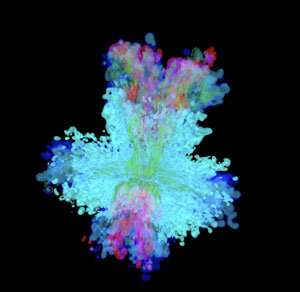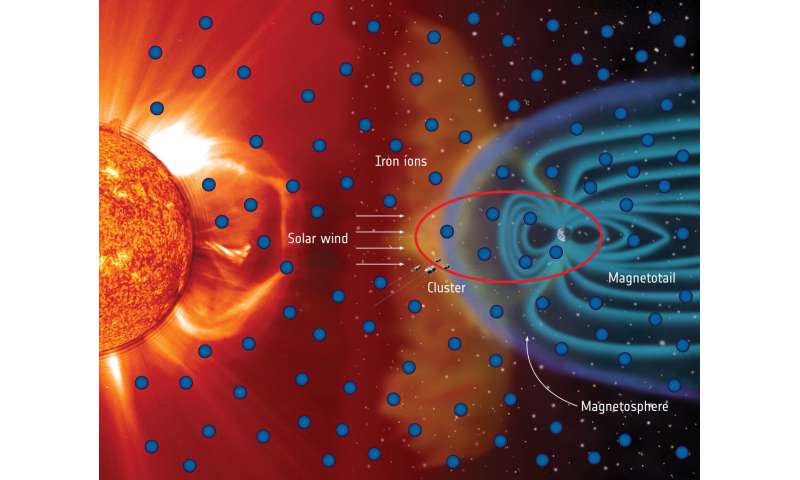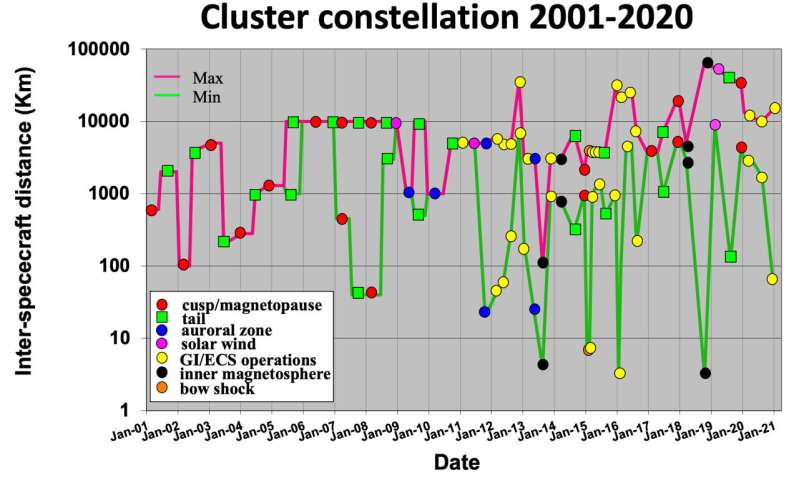Archaeologist Creates 3-D Blueprints of Historic Yukon Structures
YUKON, CANADA—CBC News reports that archaeologist Peter Dawson of the University of Calgary and his colleagues are using a drone and a terrestrial laser scanner to create 3-D replicas of historic sites at Pauline Cove, which is located on Herschel Island, in the Beaufort Sea off Yukon’s northern coast. The sites are in danger of being destroyed by wild animals, polar tourism, and erosion. The island has lost about 65 feet of coastline in the past 20 years, Dawson explained. The sites include structures built by Inuvialuit, American whalers, Anglican missionaries, and the Northwest Mounted Police, he added. “It’s giving us a really, really good record of the outside of the buildings and the inside of the buildings and an overview of the historic settlement area,” Barbara Hogan, manager of historic sites for Yukon Tourism and Culture, said of the project. When completed, the images will be stored in an online archive with historic information for public use. To read about a 900-year-old barbed arrow point recovered from the ice in southern Yukon, go to "Time's Arrow."
Study Examines Food and Gender in Bronze Age China
DUNEDIN, NEW ZEALAND—According to an Otago Daily Times report, an analysis of isotopes in teeth suggests that boys and girls living in China’s Central Plains during the Eastern Zhou Dynasty some 2,500 years ago were fed different foods. Bioarchaeologist Melanie Miller and her colleagues found that children were breastfed until they were between the ages of two-and-a-half and four years old, when they were weaned onto foods made from wheat and soybeans. The girls, however, were weaned slightly earlier than the males, Miller said. Females continued to eat more wheat and soy as they grew up, while males ate more millet, she added. Miller and her team think these dietary differences could reflect the social inequality that emerged in China's Bronze Age. Read the original scholarly article about this research in the American Journal of Physical Anthropology. To read about hominin teeth that belonged to individuals living at least 80,000 years ago in southern China, go to "An Opportunity for Early Humans in China."
Donkeys in 1,100-Year-Old Chinese Tomb May Have Played Polo
SHAANXI PROVINCE, CHINA—A team led by Songmei Hu of the Shaanxi Provincial Institute of Archaeology analyzed animal bones recovered from the looted ninth-century A.D. tomb of a Chinese noblewoman named Cui Shi, and determined that she was buried with at least three donkeys, according to a Science Magazine report. Fiona Marshall of Washington University in St. Louis said donkeys were not usually buried in such high-status graves, even in northwest China’s Tang Dynasty capital of Xi’an, which was located at one end of the trade route known as the Silk Road. The donkey bones found in Cui Shi’s tomb, however, were too small to represent useful pack animals, and they also showed wear similar to that found on animals who run and make frequent turns, Marshall added. Ancient texts indicate that Cui Shi was married to a skilled polo player who won the favor of Emperor Xizong. Cui may have also played the popular, fast-paced game, which was usually played on horseback, while riding a slower, safer donkey, Marshall explained. To read about a tomb unearthed in Shaanxi that is decorated with paintings depicting a sumptuous family feast, go to "Underground Party."
Neolithic Artifacts Unearthed in Slovakia
TRNAVA, SLOVAKIA—According to a report in The Slovak Spectator, decorated ceramics, tools made of antler, and stone tool fragments made by members of the Lengyel culture have been unearthed in western Slovakia by a team led by archaeologist Andrej Žitňan. The artifacts, estimated to be more than 6,000 years old, were excavated near a medieval fortification wall in the town of Trnava. “Its existence until these days is a matter of lucky circumstances because it was preserved in the narrow area between the wall and the filled town ditch,” said Peter Grznár of the local Regional Monument Board. The town is also known for Neolithic figurines called the Trvana Venuses, which have been dated to about 6,700 years ago. Žitňan said the new discovery suggests the Neolithic settlement that once stood on the site was larger than previously thought. To read about a cache of Roman-era artifacts uncovered near Bratislava, go to "World Roundup: Slovakia."
“Little Foot” Fossils Examined with High-Tech Tools
JOHANNESBURG, SOUTH AFRICA—According to a statement released by the University of the Witwatersrand, Amélie Beaudet and her colleagues examined high-resolution microcomputer tomography scans of a 3.67 million-year-old fossilized skull and first cervical vertebra recovered from South Africa’s Sterkfontein cave system. The bones are part of a nearly complete Australopithecus skeleton known as “Little Foot.” The study suggests that the hominin moved its head in a manner consistent with tree-climbing ability. The well-preserved fossils also offer information about the size of arteries that passed through the vertebra, and thus the amount of blood flow to the brain. Little Foot’s blood flow is estimated to resemble the blood flow observed in modern chimpanzees, or about three times lower than in modern humans. Beaudet said the low blood flow to the brain could reflect the individual’s small brain size, a poor-quality diet, or a need for energy in another part of the Australopithecus anatomy. Increased blood flow to the brain is thought to have emerged much later in human evolution, she added. To read about another Australopithecus cranium found in Ethiopia, go to "Artifact."
Possible Insect Rock Art Found in Iran
TEHRAN, IRAN—According to a statement released by Pensoft, a five- and one-half-inch petroglyph in central Iran has been described as a possible part man, part praying mantis by entomologists Mahmood Kolnegari of Islamic Azad University of Arak, Mandana Hazrati of Avaye Dornaye Khakestari Institute, Matan Shelomi of National Taiwan University, and archaeologist Mohammad Naserifard. Mantises have bulging eyes, flexible necks, elongated bodies, and enlarged forelegs for gripping prey such as flies, bees, and sometimes small birds. The image depicts a creature with six limbs, including grasping forearms, and middle limbs that end in loops or circles. It also has a triangular head topped with an extension resembling that found on the local species of mantis. The artwork is estimated to be between 4,000 and 40,000 years old. To read about a medieval Islamic empire in Iran, go to "Minaret in the Mountains."
Study Suggests Hominins Grew Faster Than Modern Humans
BURGOS, SPAIN—According to a statement released by Spain’s National Center for Research on Human Evolution, paleoanthropologist Mario Modesto-Mata and his colleagues suggest that the hominins who lived in northern Spain’s Sierra de Atapuerca reached adulthood several years earlier than modern humans. The researchers analyzed the hominins’ tooth enamel, which is set down in layers at regular intervals which are specific to each species, after they developed a technique to estimate the amount of tooth enamel lost through wear and tear. Modesto-Mata said the hominins from Sima del Elefante, who lived some 1.2 million years ago; Gran Dolina-TD6, who lived some 850,000 years ago; and Sima de los Huesos, who lived some 430,000 years ago, may have grown up to 25 percent faster than modern humans. Read the original scholarly article about this research in Scientific Reports. To read about the most complete hominin cranium older than 3 million years ago ever discovered, go to "Artifact."
Possible Maya Capital City Explored in Mexico
BOSTON, MASSACHUSETTS—According to a statement released by Brandeis University, a team of researchers including Charles Golden of Brandeis University and Andrew Scherer of Brown University has uncovered a Maya site in southeastern Mexico that may have been the capital of Sak Tz’i’, a kingdom mentioned in inscriptions uncovered at other Maya sites. Translated as “white dog,” Sak Tz’i’ was a small state founded in 750 B.C. and surrounded by more powerful states. The city was protected on one side by steep-walled streams, while masonry walls were built around the rest of the site, but the researchers suspect the city’s leaders must have engaged in political maneuverings with the kingdom’s stronger neighbors in order to survive for more than 1,000 years. The team members have found evidence of pyramids, a royal palace, a ball court, sculptures, and inscriptions describing rituals, battles, a mythical water serpent, and the dance of a rain god. The researchers will continue to work to stabilize the site’s ancient structures and to use light detection and ranging technology to map the area. Read the original scholarly article about this research in the Journal of Field Archaeology. To read about conflict between Maya centers, go to "Maya Total War."
Share
Graves of Ottoman Soldiers Unearthed Near Istanbul
ISTANBUL, TURKEY—Hurriyet Daily News reports that the remains of 30 Ottoman soldiers have been unearthed in a suburb of Istanbul. Rahmi Asal of the Istanbul Archaeology Museums Directorate said the men had served in the 86th Regiment of the Ottoman Army during the Balkan War. More than 650 Ottoman soldiers were killed near the site where the graves were found by advancing Bulgarian soldiers on the evening of November 17, 1912. The excavation recovered uniform buttons, belts, belt buckles, spoons, pouches, a compass, cigarette holders, bayonets, mirrors, and two rings. Collar numbers and seals allowed researchers to identify five of the men, Asal added. To read about an archaeological survey conducted at the World War I battlefied of Gallipoli, go to "Letter from Turkey: Anzac's Next Chapter."
Traces of 18th-Century Glass Factory Revealed in Scotland
EDINBURGH, SCOTLAND—Construction work near the mouth of the Water of Leith revealed traces of the Edinburgh and Leith Glassworks, which was founded in the mid-eighteenth century and demolished in 1912, according to a report in the Edinburgh Evening News. The excavation unearthed remnants of one of the factory’s six huge furnace cones. Each one once stood between 80 and 100 feet tall with a 40-foot diameter base. Traces of buildings such as a workshop and a warehouse were also found. Edinburgh Council archaeologist John Lawson said the glassworks made bottles for French wine, Spanish sherry, and Portuguese port imported in wooden casks and barrels. Locally produced whisky and medicines also created a demand for glass bottles, he explained, until the late nineteenth century, when the glassworks was dissolved, the equipment sold off, and the site was converted to use as a lumber yard. To read about a nineteenth-century glass factory in the northeast United States, go to "Letter from Philadelphia: Empire of Glass."
Islamic-Era Palace Gate Uncovered in Spain
ANDALUSIA, SPAIN—According to a Times of London report, traces of a multilevel gateway to the massive fortified palace built in the tenth century A.D. by Abd-al-Rahman III, the first caliph of Cordoba, have been uncovered in southern Spain. Alberto Canto of the Autonomous University of Madrid said that the gate is thought to mark the eastern entrance to the palace parade ground at the ruins of the royal city of Medina Azahara. As many as 20,000 people were once part of the lavish palace household, which included a zoo, an aviary, four fish ponds, 300 baths, weapons factories, and barracks for the soldiers of the royal guard. The palace was destroyed in A.D. 1010 during a civil war. “Everything collapsed and so we found buried the remains of its tiles, wood, nails, beams, hinges, and ornaments,” Canto said. To read about a Roman arch excavated in Andalusia, go to "Making an Entrance."
EL ASINTAL, GUATEMALA—France24 reports that a stela discovered in September of 2018 at the Tak’alik Ab’aj Archaeological Park in western Guatemala has provided new insights into the development of early Mayan writing. Researchers are still in the process of translating and interpreting the glyphs on the stone, which is believed to have been erected sometime in the late Maya Preclassic period (ca. 300 B.C.- A.D. 250) and depicts a ruler adorned with regalia, as well as references to deities associated with maize and cacao. But according to Tak’alik Ab’aj technical director Christa Schieber, the site was a laboratory for experiments in early Mayan writing. The stela, she said, provides context for a vertical sequence of glyphs that will help scholars learn more about how the system developed. Tak’alik Ab’aj is thought to have been founded by the Olmecs around 1500 B.C. and was gradually absorbed into the growing Maya world some 800 years later. To read more about Maya archaeology in Guatemala, go to "The City at the Beginning of the World."
https://www.archaeology.org/news









